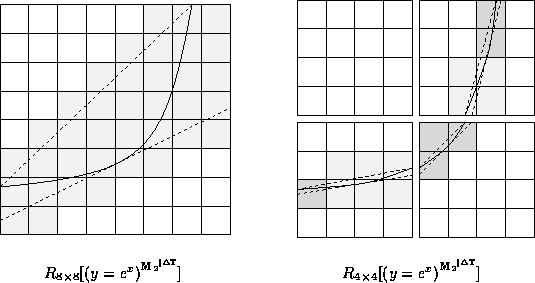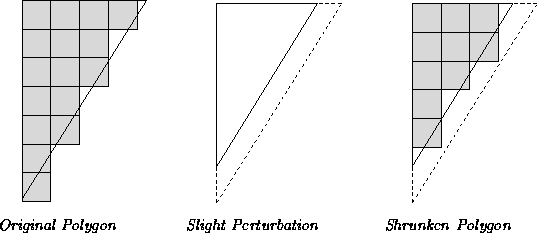A similar algorithm may be enacted, but with
linear interval arithmetic used to evaluate
![]() . The algorithm proceeds as before,
unless
. The algorithm proceeds as before,
unless
![]()

Pixel assignment may be rapidly performed by using provided graphics primitives. When
![]()
![]()
Slight perturbation of the polygon may ensure that pixels are not set incorrectly, as the following diagram suggests:

Precise, rapid pixel control is posssible; a rapid polygon rendering may be followed by manipulation of the pixels along the perimeter of the polygon. A precise rendering of the graph may be deferred until the clusters describe small collections of pixels; polygon perturbation may ensure all intervening renderings still represent G.
Employing sophisticated interval arithmetics
requires sophisticated graphics primitives;
![]() requires primitives which
render conic sections. Unavailable graphics
primitives may be implemented, but such implementation
negates part of the advantage of using a more
sophisticated interval arithmetic.
When using sophisticated interval arithmetics,
demotions may be used to reduce the variety
of graphics primitives needed:
requires primitives which
render conic sections. Unavailable graphics
primitives may be implemented, but such implementation
negates part of the advantage of using a more
sophisticated interval arithmetic.
When using sophisticated interval arithmetics,
demotions may be used to reduce the variety
of graphics primitives needed:
![]() allows
allows ![]() to be used with
polygon-filling primitives;
to be used with
polygon-filling primitives;
![]() and
and ![]() allow
allow ![]() and
and ![]() to be used with
rectangle-filling primitives.
to be used with
rectangle-filling primitives.
| Jeff Tupper | March 1996 |